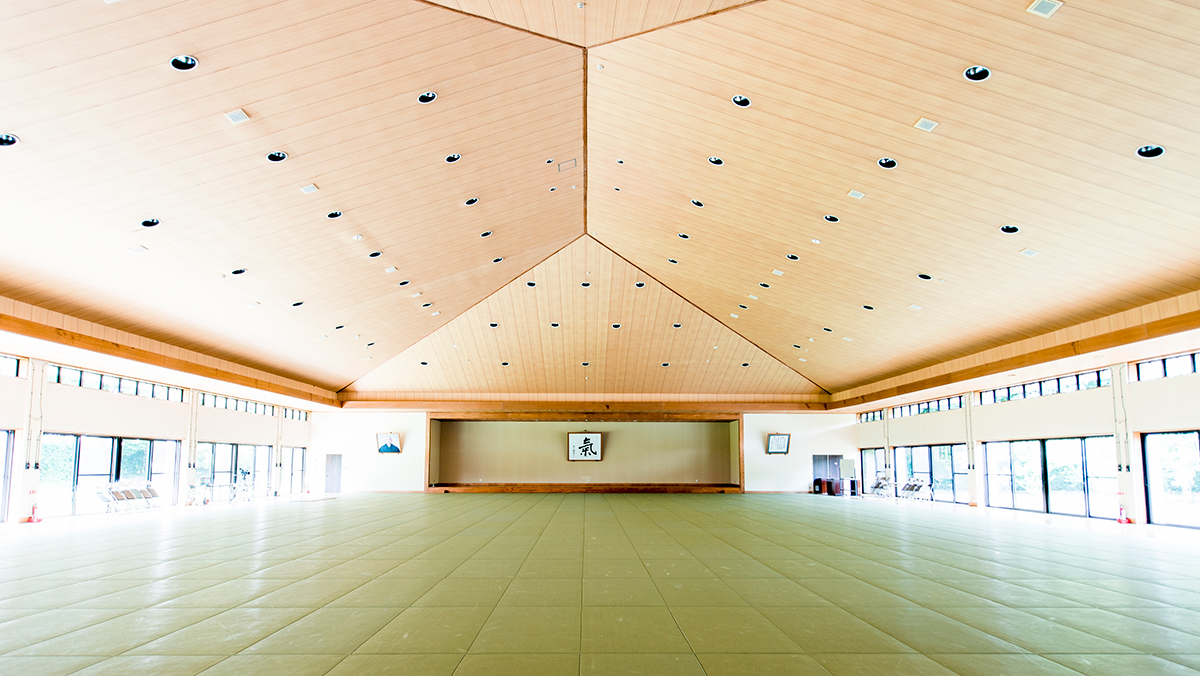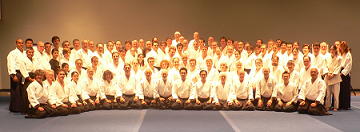A Short Instruction:
The purpose of this kind of article is to practice and validate the Ki principles (Mind moves body) which are the foundation of Ki-Aikido in your daily life. Therefore, it has no meaning if you just read it without practicing it.
The fundamental method of mastering anything is practice. However, not just practice, but it is also important to validate how one has changed as a result of the practice.
It is easy to lose what you have learned without practice. On the other hand, you will never lose what you have learned through practice and validation. Therefore, please read, practice, and validate the contents of my article at least a month.
Maintaining a Positive Subconscious
When performing Shin Shin Toitsu Aikido techniques, as is all areas of life, it is important to believe in your abilities.
This is what we call “positive thinking.” The importance of positive thinking is not a recent development; it has been recognized since long ago.
However, almost no one addresses just how to make your thinking positive. Koichi Tohei Sensei has, for half a century, taught people throughout the world that how to do something is more important that how to talk about it. The manner we do things in is crucial in making our thinking positive.
Often, people who exert themselves to make their thinking positive find they cannot do it easily. There are also people who find that their efforts only result in more stress.
First, I would like to establish the definition of the “positive” in positive thinking.
Truly being positive does not mean that only the self is positive. It does not mean interpreting things in a way that that is convenient for us. Doing so leads to collisions with those around us, and only makes situations worse.
Truly being positive means being universally positive. This means that others become positive, as well as ourselves. Even if we apply all our energy and somehow manage to become positive, this positive state means nothing if it is self-centered.
A truly positive mind is a universally positive mind.
With that defined, let’s move ahead.
The human consciousness contains both the conscious mind, which involves what we are conscious of in the present, and the unconscious mind, which we are unaware of. We frequently use the word “consciousness” to refer only to the conscious mind.
The subconscious is the storehouse of the mind, the accumulation of the knowledge we have acquired from past experiences. Even when memories fade, the subconscious holds on to everything. The conscious mind is formed using materials drawn from the subconscious mind. Therefore, trying to make the conscious mind positive will be a waste of effort if the storehouse of the subconscious is full of negative thoughts. Wasting effort in this way leads to stress.
Maintaining constantly positive thinking requires not mettle or force of will, but a continual effort to steadily develop a positive subconscious.
Let us now address a concrete method to accomplish this. There are several methods, but I would like to show you one for now.
First, let me discuss the use of language. By this, I mean making the words we use positive, or putting positive ki into words as we speak them.
We speak negative words without even realizing it. Saying that we “can’t do” something or that something is “difficult” are the best examples of this. Saying that we “couldn’t do” something, or that it “was difficult” after trying it is one thing, but there is absolutely no need to say that we “can’t” or that it’s “difficult” before trying.
The words we speak, the closest to us, enter deeply into our subconscious.
If we speak negative words, they will have just as negative an effect on our subconscious. If the subconscious becomes negative, our daily consciousness becomes negative as well. Once we understand this, we can become afraid to use negative language.
But when we say something negative, we can replace it by saying it again as something positive, so long as we do so without delay, and without feeling disappointed. It would be something like this:
“I don’t think I can do that…” (Ah! I shouldn’t say that!)
“If I (do such-and-such), I’ll be able do that!”
I urge those who think that the subconscious cannot be made positive this easily to try it themselves. If you can accomplish this, not just for a moment, but all day and every day, it will be something amazing.
Next time, I will tell you about another concrete method for making the subconscious positive.
Let’s practice and validate the following:
[Things to practice]
Confirm the definition of being “positive” (not just analyzing things in a way that’s convenient for oneself)
Check whether the words you speak on a daily basis are positive
Always speak positive language; if you speak something negative, replace it at that instant with something positive
[Things to validate]
Whether speaking with positive language has become habitual
How people’s reactions to you have changed
How your dreams have changed


